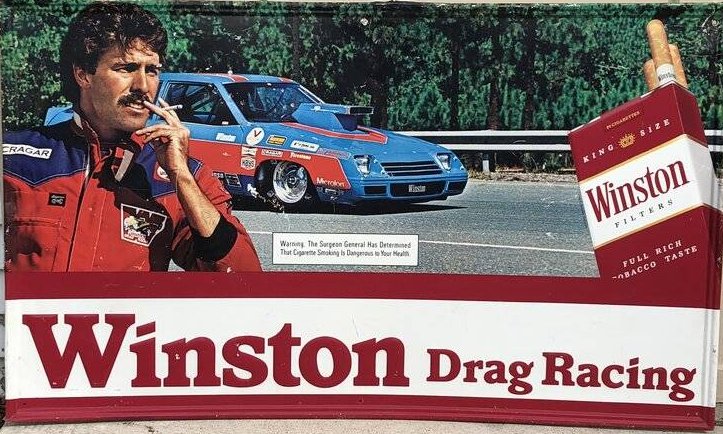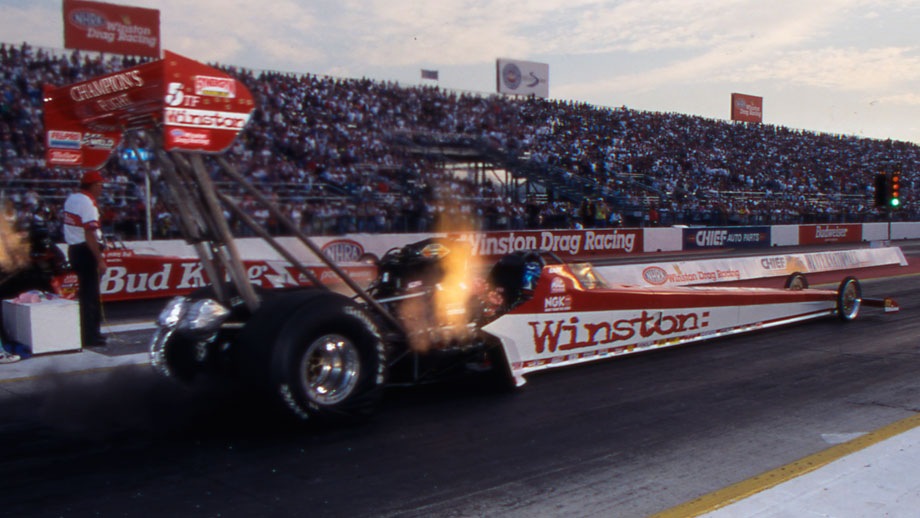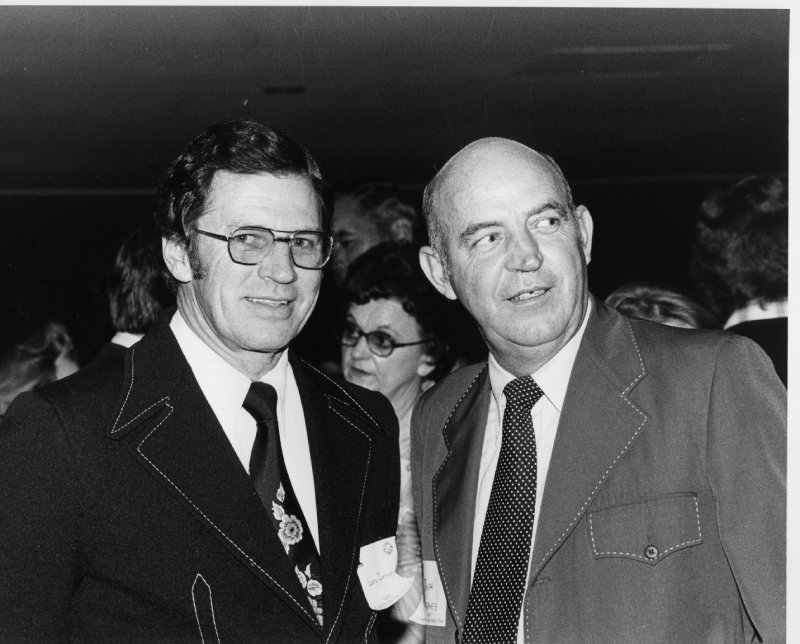#ROADto25: 2001 RJR WINSTON SAYS GOODBYE TO NHRA DRAG RACING
 EDITOR'S NOTE - For the next year, CompetitionPlus.com will celebrate its journey to 25 years of reporting drag racing news you can trust. The Road to 25 Series will present a story from each year that impacted the drag racing world. Today's installment focuses on the 2001 departure of drag racing's major sponsor RJ Reynolds Tobacco Company/Winston.
EDITOR'S NOTE - For the next year, CompetitionPlus.com will celebrate its journey to 25 years of reporting drag racing news you can trust. The Road to 25 Series will present a story from each year that impacted the drag racing world. Today's installment focuses on the 2001 departure of drag racing's major sponsor RJ Reynolds Tobacco Company/Winston.

 The trajectory of drag racing changed forever back in 1975. Twenty-six years later, it would take a massive hit.
The trajectory of drag racing changed forever back in 1975. Twenty-six years later, it would take a massive hit.
The RJ Reynolds Winston brand significantly impacted drag racing when it first became IHRA’s primary sponsor and then, thanks to an introduction by the rival series, signed with NHRA. In 2021, mainly in part due to government legislation banning the industry from advertising in motorsports, it said goodbye to a sport it had elevated to a higher level.
Gone were the ever-increasing championship payouts, the specialty races, and the greatest sponsor, many felt, a race series could ever hope for.
Drag racing fell victim to the 1998 tobacco settlement, and inevitably, RJR was forced to choose between its three primary sponsorship venues - NASCAR, the NHRA, and the Vantage Championship, a Senior PGA Tour event.
Rick Sanders, president of RJR’s Sports Marketing Enterprises, was quoted in an ESPN article as saying the decision was tough.
“Both NASCAR and NHRA deliver an excellent product to fans, are experiencing tremendous growth, and have promising futures,” Sanders said. “In the final analysis, however, we had to choose a single sponsorship and felt that the NASCAR sponsorship had the edge in supporting Winston’s overall business objectives over time.”

 Drag racing’s Winston roots can be traced back to NASCAR and track owner Larry Carrier, who operated both an oval and drag strip. Winston’s marketing exec Ralph Seagraves saw the vision of a Winston empire through motorsports, inked a deal with Carrier’s International Hot Rod Association.
Drag racing’s Winston roots can be traced back to NASCAR and track owner Larry Carrier, who operated both an oval and drag strip. Winston’s marketing exec Ralph Seagraves saw the vision of a Winston empire through motorsports, inked a deal with Carrier’s International Hot Rod Association.
Carrier knew R.J. Reynolds’ potential needed to reach well beyond the IHRA’s borders, and he recommended Seagraves reach out to his rival, Wally Parks, and the NHRA to complete the makeover of drag racing.
The news of R.J. Reynolds’ deal with the four-year-old IHRA traveled fast.
“I know this; Bill France called Wally Parks to get Wally to talk to Ralph about Winston getting into NHRA drag racing,” Jones said. “I know that because he publicly said that when he was inducted into the Hall of Fame.”
Seagraves envisioned not IHRA or NHRA drag racing but Winston Drag Racing.
“Seagraves gave drag racing a voice that didn’t necessarily come strictly from Bristol, Tennessee, or from North Hollywood, California, which is where NHRA was at the time,” noted historian Bret Kepner said. “It just came from drag racing. And for a brief period there -- until Carrier and Parks really started going at it tooth and nail, each trying to keep their part of the Winston pie -- until that happened for a very brief time, drag racing was almost completely unified.”
Suddenly, this new direction provided drag racing with an inside track for media exposure once believed out of reach.
“Winston would buy a third of a page ad in all of the major daily newspapers we went into,” noted former NHRA press and publicity director Steve Earwood. “This was in the time when newspapers were king. If you had those local newspapers covering your event, you reached everybody. This drew in the television networks because they had to cover whatever news the papers delivered. It wasn’t rare to get the three major affiliates in each market.”
 Television advertising of cigarettes was banned on April 1, 1970, but that didn’t stop Seagraves and RJR from pushing for a more robust presentation of drag racing on television. There was a time when drag racing was only limited to presentation twice annually on ABC’s Wide World of Sports. But, by 1975, it became syndicated through NHRA’s Diamond P property. And by 1980, NHRA drag racing was televised on all three major network’s sports variety shows. IHRA was on ESPN in 1984.
Television advertising of cigarettes was banned on April 1, 1970, but that didn’t stop Seagraves and RJR from pushing for a more robust presentation of drag racing on television. There was a time when drag racing was only limited to presentation twice annually on ABC’s Wide World of Sports. But, by 1975, it became syndicated through NHRA’s Diamond P property. And by 1980, NHRA drag racing was televised on all three major network’s sports variety shows. IHRA was on ESPN in 1984.
In its time, RJR literally painted drag racing in red and white.
“Ralph and RJR had track improvement money for the major event tracks,” Jones explained. “They had a paint program where any drag strip if they painted it red and white Winston colors and kind of a Winston theme, red, white, red and everything, they could get free paint. And I mean they would ship a truckload of paint into the drag strip for them, but they had to paint their guardrails, their buildings and everything. That was the free deal. And the building was red, white, red, like a pack of Winston cigarettes.
“They actually went to the sanctioning body, and the sanctioning body had to recommend it and say this is what we’d like to have from Winston. A lot of them got scoreboards that didn’t have scoreboards, remodeling of the tower, and there was so much he was instrumental in doing for the tracks.”
The initial points fund for the NHRA started at $100,000 in 1975 and was $2.3 million when the association with drag racing ended at the end of the 2001 season.
And then, one day, this support was all gone.
“We lost that activation,” said 16-time NHRA champion John Force. “Winston was a big machine that promoted us in every town, and they activated us and put people in the stands and let the world know that we’re coming to town. They did such a good job promoting us. We were in every town, every city, every media building, every newspaper, every radio station. They opened that door working with NHRA because they had all the connections, and losing that hurt.”
Earwood, whose Rockingham Dragway held the Winston Invitational, said the loss of RJR/Winston.
“For those who weren’t prepared, it was a struggle because you had to scramble to replace that income,” Earwood said. “With the power they had behind it, primarily with the finances and the promotions that helped to draw in other sponsors, which they were able to get other corporations involved.
“Losing them was a bit of a shock, but adversity makes you get creative, and it made it stronger in many ways. Initially, it was a blow, but the sport is so restless because of the competitors that it survived and will continue to primarily because of the competitor.”
2001 DRAG RACING NEWS
* NHRA announces its 2002, and the elimination of Pro Stock Truck
* Pro Modified makes its debut as an exhibition category in NHRA
* Kenny Bernstein (Top Fuel) and Warren Johnson (Pro Stock) win their final career championships. They are joined by John Force and Angelle Sampey.
* Rookie Top Fuel driver Darrell Russell wins in his debut at NHRA Winternationals.
* Gene Wilson, son of fishing great Orlando Wilson, captures the IHRA Pro Stock title. He is joined by wilson was joined by Clay Millican (Top Fuel), Mike Janis (Pro Mod), Mark Thomas (Funny Car), and Doug Vancil (Top Fuel Harley).







































